CFD Analysis of a Buffer Tank Redesigned with a Thermosyphon Concentrator Tube
Abstract
:1. Introduction
2. Mode Description
3. Studied Buffer Tank
4. Buffer Tank Simulation
4.1. Simulation in Heat Exchanger Mode
4.2. Simulation in Accumulation Mode
4.3. Aspects for Improvement
5. Improved Design
6. Simulation of the Redesigned Tank
6.1. Study in Heating Mode
6.2. Study of Heat Exchanger Mode
7. Conclusions
Author Contributions
Funding
Conflicts of Interest
References
- Fan, J.; Furbo, S. Thermal stratification in a hot water tank established by heat loss from the tank. Sol. Energy 2012, 86, 3460–3469. [Google Scholar] [CrossRef]
- Han, Y.M.; Wang, R.Z.; Dai, Y.J. Thermal stratification within the water tank. Renew. Sustain. Energy Rev. 2009, 13, 1014–1026. [Google Scholar] [CrossRef]
- Andersen, E.; Furbo, S. Theoretical comparison of solar water/space-heating combi systems and stratification design options. J. Sol. Energy Eng. Trans. Asme. 2007, 129, 438–448. [Google Scholar] [CrossRef]
- Ievers, S.; Lin, W. Numerical simulation of three-dimensional flow dynamics in a hot water storage tank. Appl. Energy 2009, 86, 2604–2614. [Google Scholar] [CrossRef] [Green Version]
- Kang, M. Thermal mixing in a water tank during heating process. Int. J. Heat Mass Transf. 2002, 45, 4361–4366. [Google Scholar] [CrossRef]
- Dragsted, J.; Furbo, S.; Dannemand, M.; Bava, F. Thermal stratification built up in hot water tank with different inlet stratifiers. Sol. Energy 2017, 147, 414–425. [Google Scholar] [CrossRef] [Green Version]
- Bouhal, T.; Fertahi, S.; Agrouaz, Y.; El Rhafiki, T.; Kousksou, T.; Jamil, A. Numerical modeling and optimization of thermal stratification in solar hot water storage tanks for domestic applications: CFD study. Sol. Energy 2017, 157, 441–455. [Google Scholar] [CrossRef]
- Abdelhak, O.; Mhiri, H.; Bournot, P. CFD analysis of thermal stratification in domestic hot water storage tank during dynamic mode. Build. Simul. 2015, 8, 421–429. [Google Scholar] [CrossRef]
- Arslan, M.; Igci, A.A. Thermal performance of a vertical solar hot water storage tank with a mantle heat exchanger depending on the discharging operation parameters. Sol. Energy 2015, 116, 184–204. [Google Scholar] [CrossRef]
- Fan, J.; Ptacek, V.; Furbo, S.; Dragsted, J.; Sun, P. Performance analysis of a new thermal stratification device for hot water storage tank heated at the bottom. In Proceedings of the ISES Solar World Congress 2015, Daegu, Korea, 8–12 November 2015. [Google Scholar]
- Wang, Z.; Zhang, H.; Dou, B.; Huang, H.; Wu, W.; Wang, Z. Experimental and numerical research of thermal stratification with a novel inlet in a dynamic hot water storage tank. Renew. Energy 2017, 111, 353–371. [Google Scholar] [CrossRef]
- Gómez, M.A.; Collazo, J.; Porteiro, J.; Míguez, J.L. Numerical study of the thermal behaviour of a water heater tank with a corrugated coil. Int. J. Heat Mass Transf. 2018, 122, 574–586. [Google Scholar] [CrossRef]
- Patankar, S.V. Numerical Heat Transfer and Fluid Flow; Hemisphere Publishing Corporation: New York, NY, USA, 1980; pp. 126–131. [Google Scholar]
- Kassemi, M.; Kartuzova, O. Effect of interfacial turbulence and accommodation coefficient on CFD predictions of pressurization and pressure control in cryogenic storage tank. Cryogenics 2016, 74, 138–153. [Google Scholar] [CrossRef] [Green Version]
- Sivalingam, K.; Martin, S.; Wala, A.A.S. Numerical Validation of Floating OffshoreWind Turbine Scaled Rotors for Surge Motion. Energies 2018, 11, 2578. [Google Scholar] [CrossRef]
- Versteeg, H.K.; Malalasekera, W. An Introduction to Computational Fluid Dynamics. Available online: http://ftp.demec.ufpr.br/disciplinas/TM702/Versteeg_Malalasekera_2ed.pdf (accessed on 5 June 2019).
- Gray, D.D.; Giorgini, A. The validity of the boussinesq approximation for liquids and gases. Int. J. Heat Mass Transf. 1976, 19, 545–551. [Google Scholar] [CrossRef]
- Gómez, M.A.; Collazo, J.; Porteiro, J.; Míguez, J.L. Numerical study of an external device for the improvement of the thermal stratification in hot water storage tanks. Appl. Therm. Eng. 2018, 144, 996–1009. [Google Scholar] [CrossRef]
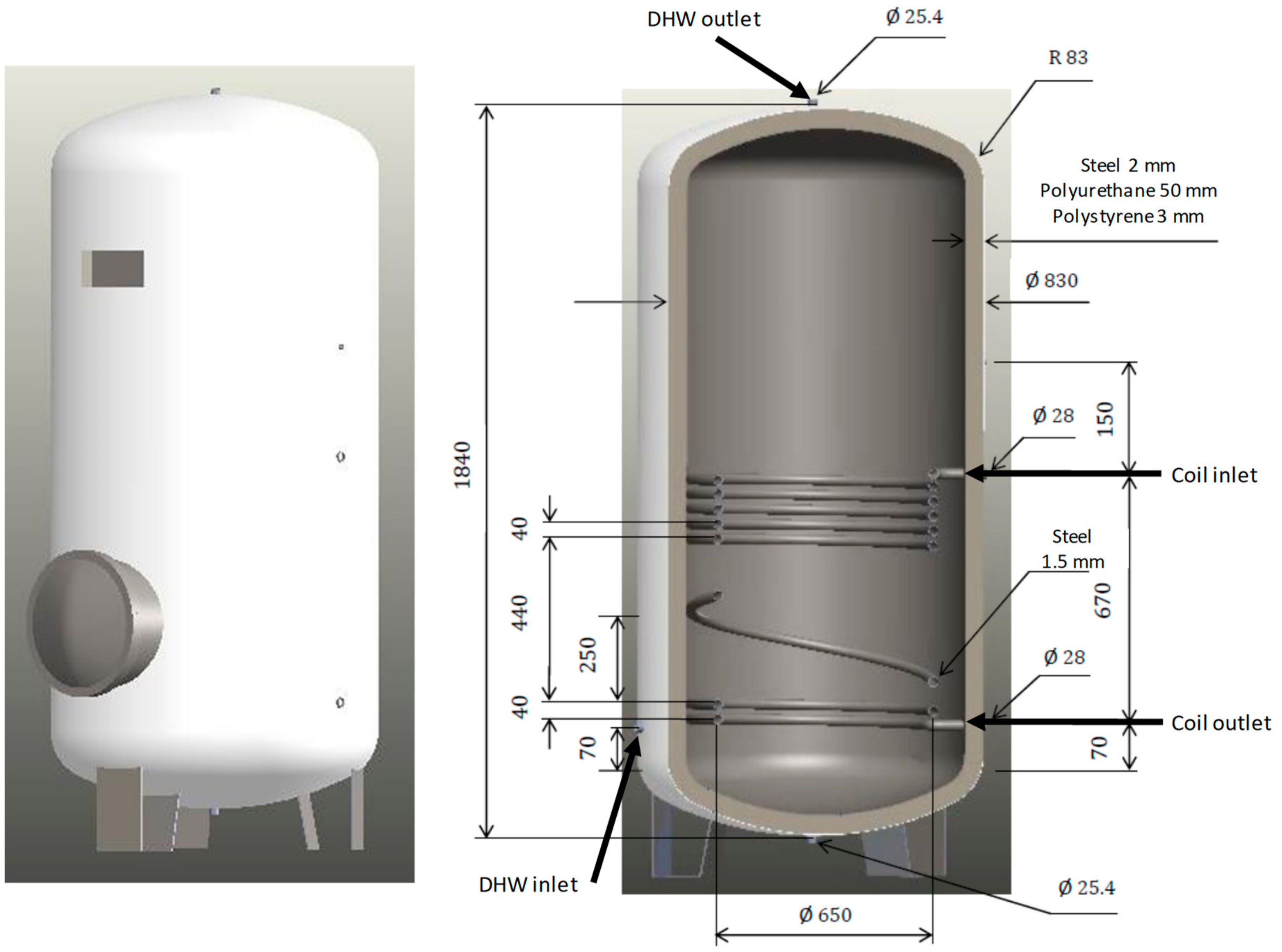


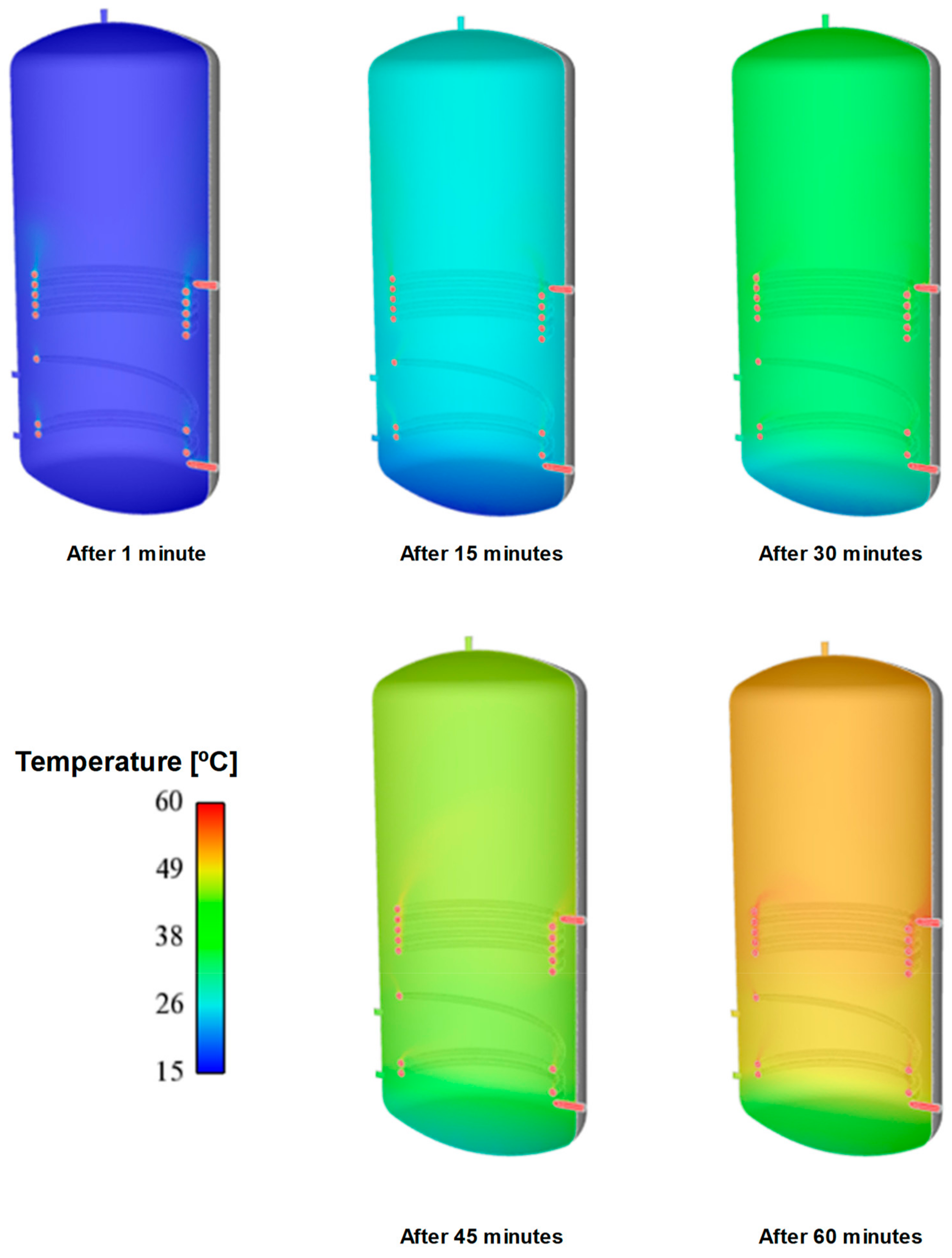
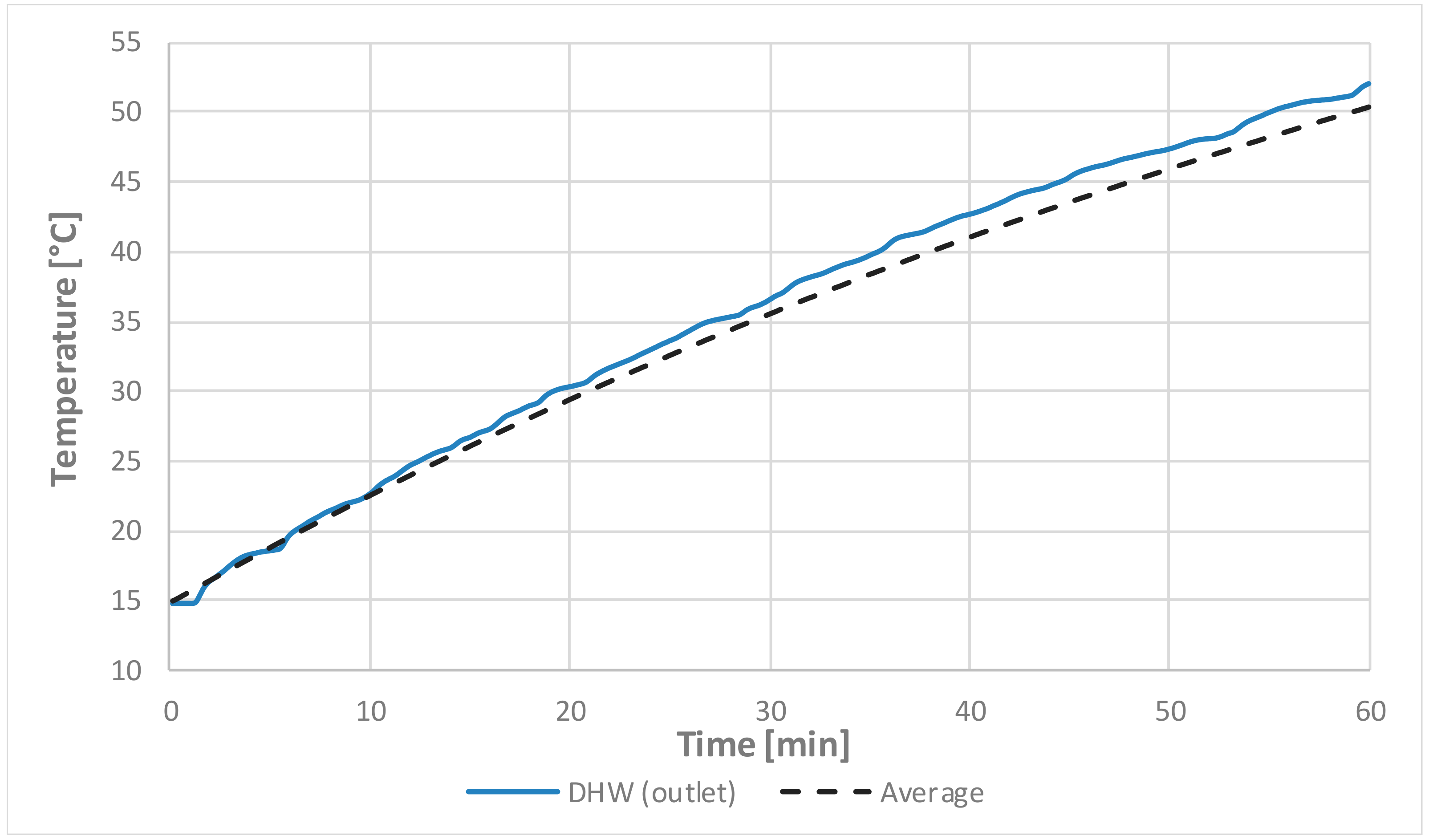
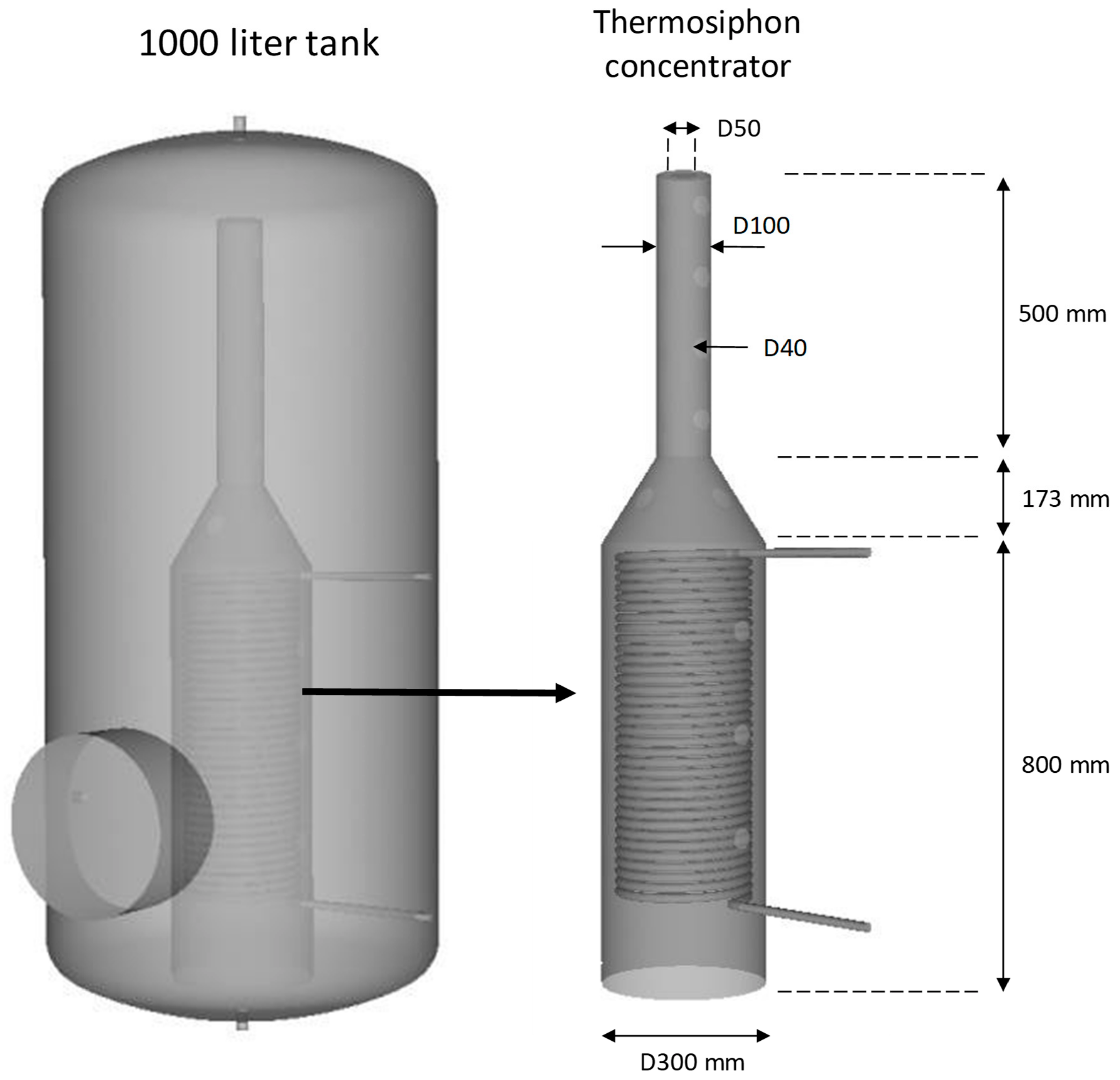
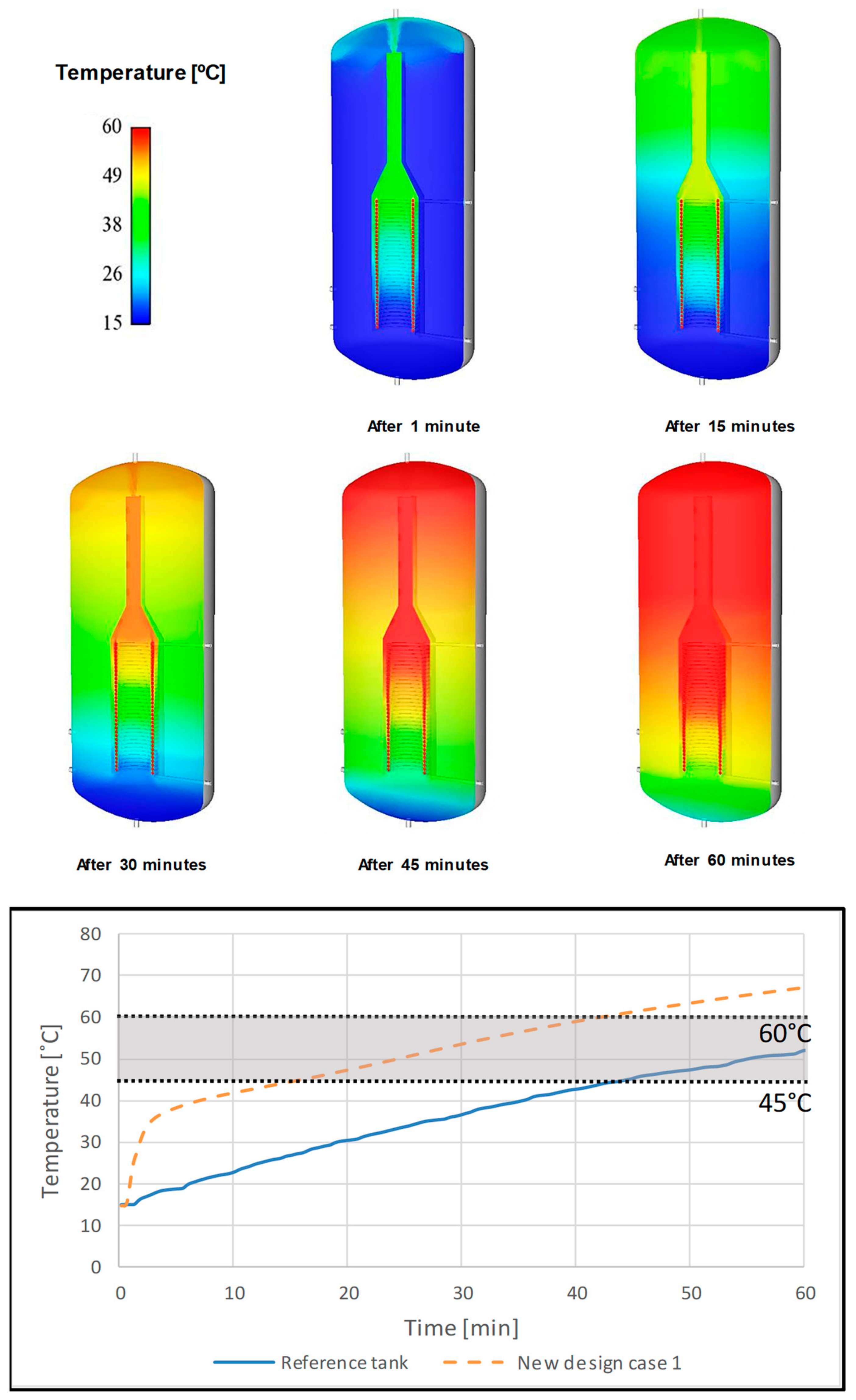
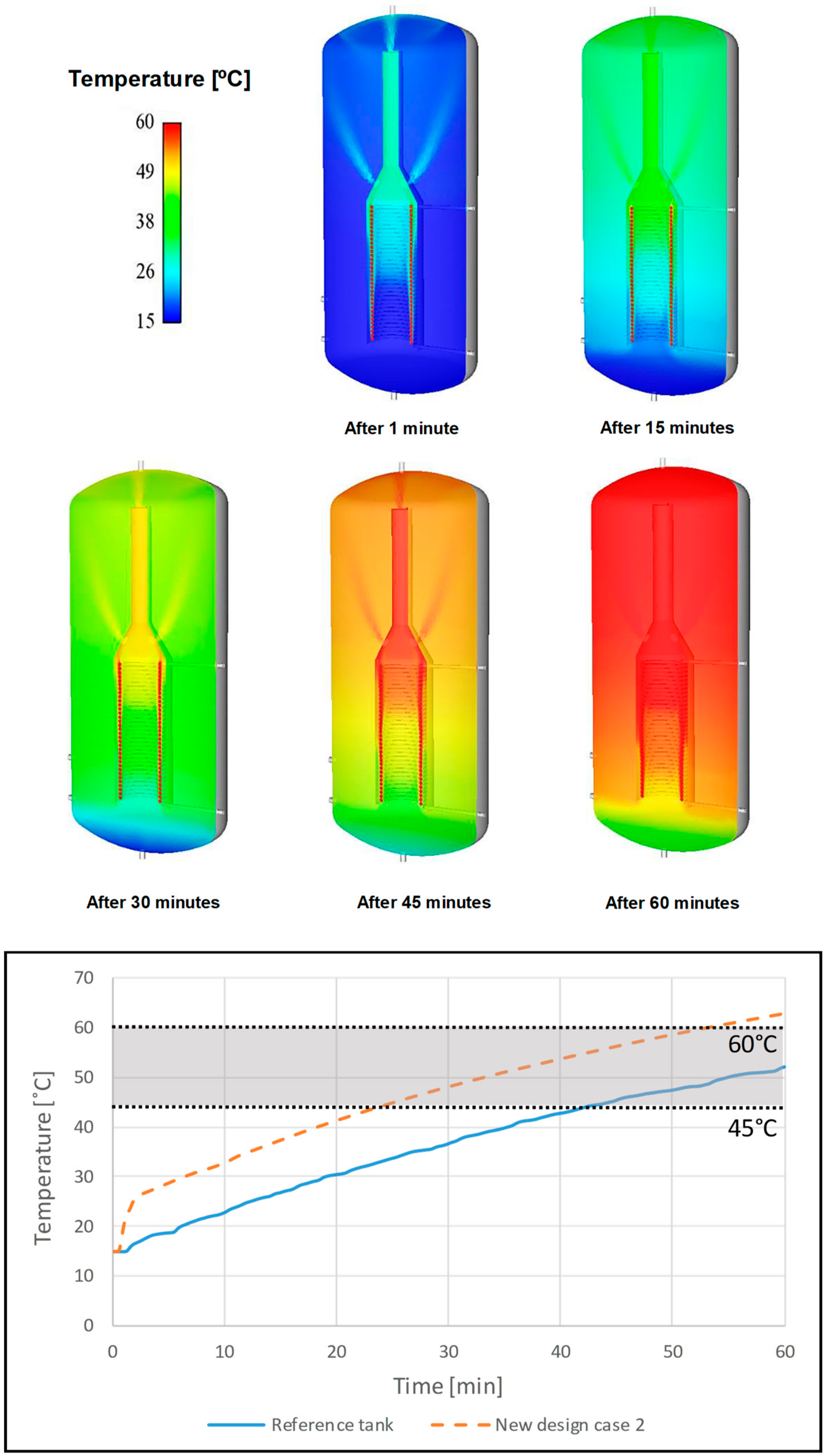





| Magnitude | Value |
|---|---|
| DHW mass flux [l/s] | 0.418 |
| Inlet water temperature [°C] | 15 |
| Coil mass flux [l/s] | 0.76 |
| Coil inlet temperature [°C] | 90 |
| Magnitude | Value |
|---|---|
| DHW temperature [°C] | 41.1 |
| Coil return temperature [°C] | 75.2 |
| Coil heat exchanged [kW] | 45.8 |
| Heat exchange surface area [m²] | 1.45 |
| Test | Main Characteristics |
|---|---|
| Simulation 1 | The tube perforations remain closed for 60 min of heating. |
| Simulation 2 | The tube perforations are open for 60 min of heating. |
| Simulation 3 | The tube perforations remain closed for 30 min and are then opened with continued heating for 30 additional minutes. |
| Simulation 4 | The tube perforations remain closed for 30 min and are then opened; the top outlet of the tube is closed for the next 30 min. |
| Simulation 5 | The tube is extended at the bottom, and the simulation is performed under the same conditions of those of simulation 4. |
| Magnitude | Reference Tank | Redesign without Extension | Redesign with Extension |
|---|---|---|---|
| DHW temperature [°C] | 41.0 | 45.7 | 46.2 |
| Coil return temperature [°C] | 75.2 | 72.6 | 72.4 |
| Coil heat exchanged [kW] | 45.8 | 53.8 | 54.6 |
| Heat exchange surface area [m²] | 1.45 | 1.45 | 1.45 |
© 2019 by the authors. Licensee MDPI, Basel, Switzerland. This article is an open access article distributed under the terms and conditions of the Creative Commons Attribution (CC BY) license (http://creativecommons.org/licenses/by/4.0/).
Share and Cite
Gómez, M.A.; Chapela, S.; Collazo, J.; Míguez, J.L. CFD Analysis of a Buffer Tank Redesigned with a Thermosyphon Concentrator Tube. Energies 2019, 12, 2162. https://doi.org/10.3390/en12112162
Gómez MA, Chapela S, Collazo J, Míguez JL. CFD Analysis of a Buffer Tank Redesigned with a Thermosyphon Concentrator Tube. Energies. 2019; 12(11):2162. https://doi.org/10.3390/en12112162
Chicago/Turabian StyleGómez, Miguel A., Sergio Chapela, Joaquín Collazo, and José L. Míguez. 2019. "CFD Analysis of a Buffer Tank Redesigned with a Thermosyphon Concentrator Tube" Energies 12, no. 11: 2162. https://doi.org/10.3390/en12112162




